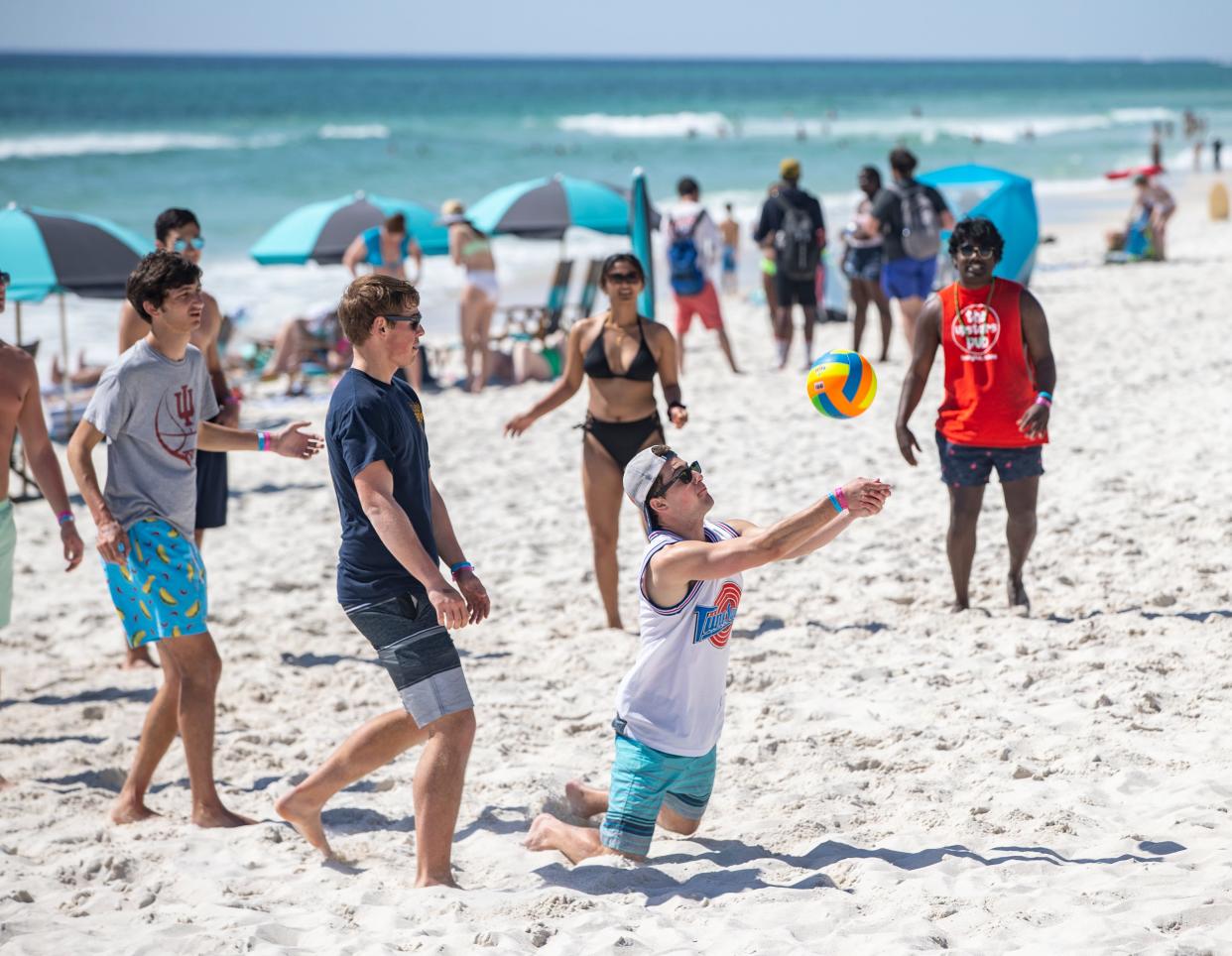Calmer conditions ahead? Panama City Beach could see yellow beach flags July 4th weekend

PANAMA CITY BEACH − There's a chance calmer waters and yellow flags might be around the corner for the Beach.
According to Daryl Paul, beach safety director for Panama City Beach Fire Rescue, beach flags might soon shift to yellow just in time for Independence Day weekend, ending a more than two-week stretch of days plagued by red or double red flags.
Officials said Wednesday afternoon that he hoped to fly yellow flags on Thursday, however red flags were posted that morning.
"Technically, the conditions that are visible today do meet our flag call criteria (for yellow), but (we decided to stay red) after referencing all the data from the various weather apps and referencing the wind direction and tide drop," Paul said Thursday. "We have a very substantial tide drop today on the shoreline, so we decided to hold on to single red."
A rough couple weeks: 'Everything is on the table': Panama City Beach area sees seven beach deaths in 10 days
Officials respond: 'A tragedy': Panama City Beach releases statement about recent string of drownings
The City Council in 2020 passed an ordinance that made it illegal in Panama City Beach to swim in the Gulf of Mexico under double red flags. Violators can be fined $500.
Red or double red flags have flown every day in Panama City Beach since June 12, according to daily text messages from ALERTBAY, a local emergency notification system. This means dangerous rip currents have existed along the coast that entire time.
Paul said the strength of rip currents is what determines the daily flags, not the size of swells crashing along the coast. Local lifeguards physically test the currents each morning before beach safety flags are posted.
Rip currents are fast moving currents created by deep channels in surrounding sandbars. These channels often run perpendicular to the shoreline and cause water to funnel faster out into deeper waters of the Gulf. Rips can vary in strength, depending on how developed the channels are, and they can sometimes be identified from shore where there is a gap in the wave break − areas where the white caps of the breaks are less noticeable.
The best thing a beachgoer caught in a rip can do is swim parallel to shore, meaning toward the left or right of where they are in distress. If they do this, they will be able to break free from the current, often landing on a sandbar where they can stand. If they still cannot stand, they will at least be in calmer water where it will be easier to make it back to shore.
Common flag colors used in beach flag warning systems include a green flag for low hazard conditions, a yellow flag for medium hazard conditions, one red flag for high hazard conditions and two red flags for very dangerous conditions.
Panama City Beach, however, never flies green flags because officials say beachgoers should always be cautious when they enter the Gulf. Rip currents can always be present, even under clear skies and calm surf conditions.
From June 15-24, seven tourists died in Bay County after fighting strong rip currents in the Gulf of Mexico. Of these fatalities, six occurred within Panama City Beach limits, and one happened on an unincorporated beach. All but one were under double red flags.
Though it has been a rough couple of weeks for the Beach, Paul said he will only keep red or double red flags posted if conditions actually call for them. They will not remain up during calm conditions just because of the recent string of deaths. He wants beachgoers to still trust the local flag warning system.
Paul also suggested beachgoers try to swim at the three guarded beaches in the Panama City Beach area. They are at the Russell-Fields Pier, M.B. Miller Pier and Rick Seltzer Park. Panama City Beach oversees the Russell-Fields Pier, while Bay County oversees the other two locations. However, lifeguards are present at all three.
To sign up for text alerts on local beach flags, which are sent everyday about 10 a.m., text "PCBFLAGS" to 888777.
"It is unfortunate over the past couple (weeks) what we've had ... but we still have a job to do, and we still have to make accurate calls," Paul said. "We're not letting it spook us or anything, or overexaggerating. We still want the public to know that they can have faith in the flag system because that's our first line of communication."
This article originally appeared on The News Herald: Panama City Beach might soon finally have calmer beach conditions
